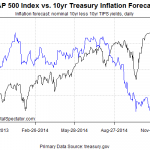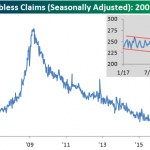Following the latest weekly battering of the USD, which has tumbled to near one year lows, the latest CFTC net spec positioning (which traditionally represents a lagging picture of price trend and has very limited, if any, informational value) saw a continuation of recent extreme moves, nowhere more so than in Euro and Japanese Yen net spec positions, which have shifted to most long since late 2013, and most short since January 2014 respectively.
A quick summary of the latest FX CFTC net exposure via DB reveals that specs turned net long in CAD futures by 8K contracts for the first time since mid-March, buying over 16K contracts over the week.

They continued to pare their net shorts in GBP by 8K contracts to 16K contracts for the third week in a row.

In the meantime, they increased their net shorts in JPY for the fourth straight week to 127K contracts, the highest since January 2014…

… but the most notable move was the surge in net EUR bullish spec positioning, which has surpassed the previous high seen in 2013.According to JPM, this recent position build up is less likely to have been driven by CTAs, as in the bank’s trend following strategies framework, trend following signals turned long the euro some time ago in May. So the most recent positioning build is more likely to have driven by discretionary managers, including currency hedge funds which up until June appear to have missed out on the EUR rally.

This is shown in Figure 10, which depicts the performance of Currency HFs using the HFRI Monthly Currency HF Index and compares it with the performance of JPM’s EUR tradable index. Figure 10 implies that Currency HFs were short the euro (i.e. their performance was negative related to that of the euro) during January and February this year but they had shifted to a pretty long position in the euro in April and May. They appear to have taken profit in June missing out on the euro rise. The fact that Currency HFs had missed out on the euro’s rise in June, makes them a good candidate in them catching up in July, thus explaining the positioning build up revealed by CFTC data.


















Leave A Comment